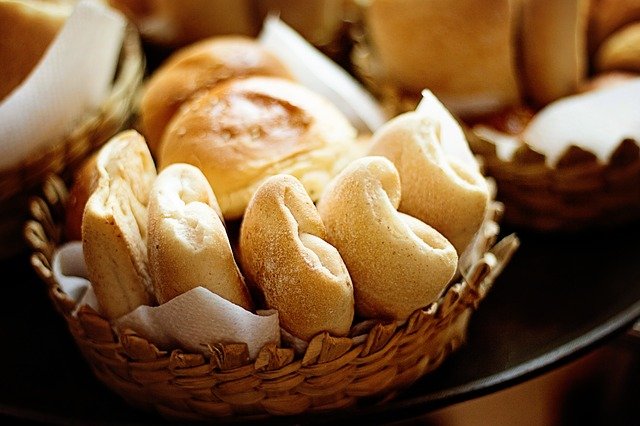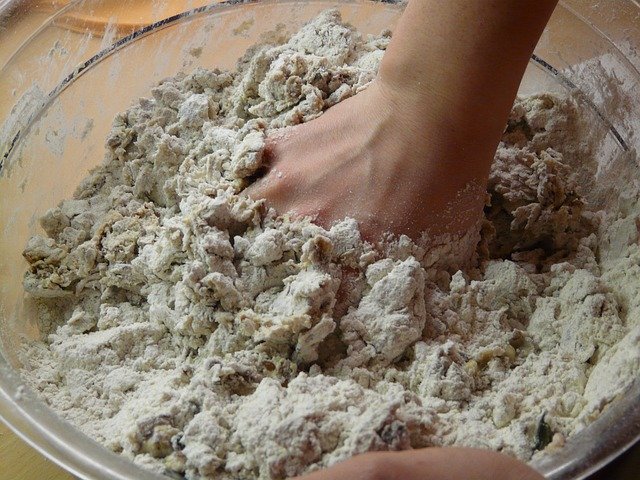Cooking Ahead for the Holidays: Breads
You don't have to wait until the night before to start cooking! You can take a little time during the weeks before to prep foods that will be delicious on the holiday...without the stress of running around trying to everything done!
Cooking Ahead for the Holidays: Breads
by Katie Cullum

You can probably start to smell those homemade rolls for the holiday....but then you ask yourself WHEN would I have time to do that? So you just get a bag in the freezer section of the store and call it good.
You may NOT have time the night before or the morning of to make homemade rolls! But that doesn't mean that you can't make them ahead and freeze them!
I remember the "brown and serve" rolls my Mom used to buy. You can take that same concept and have your own "brown and serve" rolls this year!
Why bother?
You may have noticed that the prices in the stores are going up. And while rolls are easy to purchase, they are also easy to make yourself. The main reason people don't make their own is usually time. So take time one evening or weekend to make your own!
Safety First!
While it's tempting to skip this section, it can be very disappointing to make your own rolls...and then not even eat them! Take a little time to make sure they stay safe and fresh.
It's important to use freezer containers or wrappings that are moisture-vapor-resistant. Here are some general guidelines.
Wrapping Materials
Suitable freezer wrapping materials include freezer paper, plastic freezer bags, plastic wrap designed for freezer use and extra heavy or heavy duty freezer aluminum foil. Some brands of freezer bags are available in 2 and 2 1/2 gallon sizes suitable for freezing larger foods.
Check wrapping labels for specific information about whether the wrappings work for freezing. For example, not all plastic wraps are designed for freezer use. It's important to use materials intended for freezing as they're more likely to keep moisture out and are less likely to tear in the freezer.
For freezer paper, check directions for which side of the paper is placed next to the food. Unless directed otherwise, the plastic coated side goes next to food. Secure freezer paper with freezer tape.
Packing for the Freezer
Thoroughly cool baked goods before freezing or they'll become soggy. Place food on a wire cooling rack to allow air to circulate around the food and promote faster cooling.
Pack food compactly and try to get as much air out of the package as possible. The quality of food declines faster when excess air is left in the package. Wrap well and seal tightly to keep moisture out.
"Freezer burn," when the surface of the food appears light colored and dried out, occurs when moisture on the surface evaporates. Proper cooling, air removal, moisture-vapor-resistant packaging, a tight seal and an appropriate length of storage help prevent freezer burn. While a food with freezer burn is safe to eat, the quality is lower.
Label each package with the type and amount of the contents and the date it was frozen. You also may wish to include a suggested "use by" date based on the information in this article. Consider dividing foods according to events -- for example: Package and label one container of rolls for Thanksgiving, another for the Dec. 10 party, and so on. You may wish to keep a written list of frozen holiday baked goods.
Freezing Guidelines
Freeze food at 0 F or below. Avoid overloading your freezer with too much food for freezing at one time. Leave space between packages so air can circulate around them. Then, when the food is frozen, stack or move the foods closer together.
During freezing, the water in food freezes and the resulting ice crystals can affect the texture of foods. Baked goods low in moisture freeze well with little change in their texture. This includes breads, rolls, cakes, cookies and pie crusts. These same types of foods thaw rapidly. High-fat frostings also freeze well.

How?
You can start by preparing yeast rolls now and still smell that wonderful smell on a holiday morning. Let rolls rise as usual and bake until done, but not browned. They can be browned when removed from the freezer and heated to serve. TIP: let kids help with this. They work on their motor skills, and maybe even some frustrations!
Some yeast dough recipes can even be frozen and baked the day you plan to serve the rolls.
Yeast Breads (Rolls, sweet rolls, bread, coffee cake)
Make as usual. Cool. Package and freeze. Thaw in original wrapping at room temperature. To serve warm, reheat in foil-covered container or in foil wrapping at 300 F for 15 to 20 minutes; 5 to 10 minutes for rolls.
Suggested freezer storage time: 3 - 6 months.
Don't forget quick breads! These are great to pull out for a quick breakfast around the holidays or an easy snack.
Quick Breads (coffeecake, fruit, nut breads)
(Note: Traditional low-fat muffins and biscuits are of maximum quality right out of the oven. Quality decreases when they are frozen.)
Prepare and bake as usual. Cool. Package and freeze. Thaw at room temperature in original wrapping. Slice fruit and nut breads while partially frozen to prevent crumbling. Foil-wrapped coffeecakes may be reheated in foil in a 325 to 350 F oven for 15 to 20 minutes or until hot.
Suggested freezer storage time: 2 - 3 months.
Check out the other post in this series - Cooking Ahead for the Holidays - Desserts!